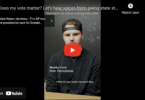By Adriana Diaz
BU News Service
Boston — Many people associate HIV with the epidemic and advocacy in the
On Feb. 5, the U.S. Department of Health and Human Services published their plan to end the HIV epidemic by the year 2030. In the strategy, titled “Ending the HIV Epidemic: A Plan for America,” Suffolk County, Massachusetts is listed as one of the 48 “high burden counties” in which the department will focus their efforts.
This announcement comes just a few weeks after Massachusetts Department of Public Health officials warned of a spike in new HIV diagnoses among Boston drug users. Omar Cabrera, of the State Department of Public Health, said in an email that this year they have seen six new HIV cases among PWID (people who inject drugs), “which is a cause for concern.”
Along with the country as a whole, Massachusetts is experiencing an opioid epidemic and, according to the CDC, one in 10 new HIV infections occurs among people who inject drugs.
Suffolk County has historically contained about one-third of all HIV cases in Massachusetts. Including the city of Boston, Suffolk County, like most cities, is home to a relatively large number of persons at risk of HIV infection.
Dr. Lora Sabin, associate professor of global health at Boston University’s School of Public Health, and Dr. David Hamer, an infectious disease physician at Boston Medical Center, explained in a joint email response, “HIV is linked to individuals who struggle with job insecurity, poor socio-economic status, and/or homelessness, some of whom do not completely understand HIV transmission, prevention, and treatment, and some who also experience the dual burden of mental health issues and drug/alcohol addiction.”
Suffolk County, which encompasses Boston, Revere, Winthrop, and Chelsea, is home to a large number of individuals experiencing these issues according to Sabin and Hamer and state data. “There are also many homeless shelters, so people come to this county for residence. Some of the shelters are linked to health care services, including mental health, which attracts people who need these services. The same is true of opioid drug addiction services, as the county has a number of methadone clinics. Low-income individuals who need shelter, mental health services and addiction treatment are at high risk of HIV infection and also need HIV services. This concentration of factors makes Suffolk County a high burden area,” says Sabin and Hamer.
Suffolk County is home to another large community at risk for HIV. According to a Gallup Daily Tracking Survey, the state of Massachusetts is the second “gayest” state in the country with 5 percent identifying as lesbian, gay, bisexual, or transgender (LGBT).
Suffolk County individually has 8.1% of its population of adults identifying as LGBT, amounting to around 64,633 people. All prominent HIV research has found that gay or bisexual men and transgender women who have sex with men are at highest risk for HIV infection. “The largest proportion, nearly 50%, of cases in Suffolk County are among men who have sex with men,” said Cabrera.
The U.S. census data report that Blacks/African Americans make up 24.9% percent of the Boston population and Hispanics/Latinos
While the Department of Public Health optimistically list some ambitious goals for what needs to get done to eradicate HIV, Sabin, and Hamer do not see the nation’s plan to end HIV by 2030 achievable.
During a phone interview, Serena Rajabiun, research assistant professor at Boston University’s School of Social Work, discussed the challenges of the HIV epidemic that go beyond the biomedical interventions. That’s why Boston University has formed the Evaluation and Technical Assistance Provider (ETAP) to advance access to housing, employment, and HIV care for people from low-income and racial and ethnic minority communities.
HIV is a disease that affects poverty and its prevention and treatment is often halted by the negative stigmas and discrimination surrounding the populations most at risk.
Rajabiun explained that being “a disease of poverty” means that HIV “affects many racial ethnic minority communities and institutional racism has a big part of that. We need to invest resources to strategies that really engage the communities, promote healthy outcomes, and provide support to do it.” ETAP is investing in places that have the history of that racism or homophobia, which stem into poor housing, poor food security, poor health services, poor transportation, and poor education.
Optimistically, Rajabiun does see the current biomedical interventions as “simply life changing” since “they really make a shift from a life threatening condition to a chronic illness. The new regimens make it so much easier for people to tolerate and manage their life living with HIV as well as actually reduce transmission so we can end the epidemic.”
But in the end, if people are not able to access those biomedical interventions because of poverty, racial ethnic inequities, stigmas and other structural factors Rajabiun agrees with Sabin and Hamer that the goal for 2030 will not be reached.








This was a well written strong informative piece.